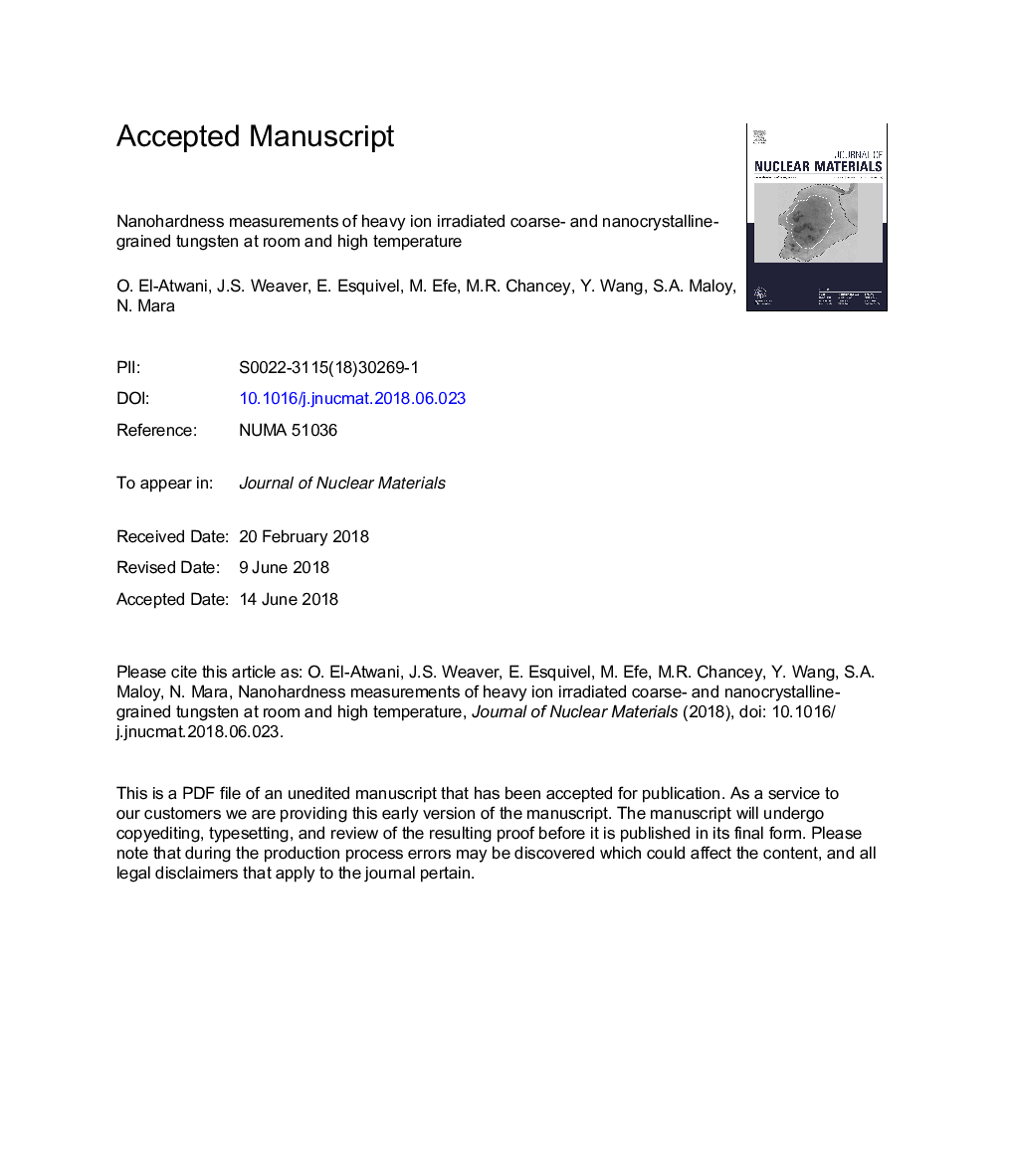| Article ID | Journal | Published Year | Pages | File Type |
|---|---|---|---|---|
| 7962988 | Journal of Nuclear Materials | 2018 | 28 Pages |
Abstract
Heavy ion irradiation was performed on coarse and nanocrystalline-grained tungsten (CGW and NGW, respectively) at room temperature (RT) and 1050â¯K from 0.25 to 4 dpa to simulate radiation damage for fusion energy applications. TEM and nanohardness measurements of irradiated samples were made to quantify the radiation tolerance of these two candidate materials. In this case, TEM is used to quantify the defect morphology at low dpa values and determine the barrier strength coefficients of the different defects using the dispersed barrier hardening (DBH) model. Nanohardness measurements and the determined barrier strength coefficients are then used to estimate the defect morphologies at higher dpa values where quantification with TEM is not reliable. Quantification of the damage at low dpa (0.25 dpa) showed different loop (at RT and 1050â¯K) and void (at 1050â¯K) densities and sizes for the two grain sizes. Nanohardness measurements performed on the samples showed a very small change in hardness for RT ion irradiation and a higher but more scattered increase in hardness for 1050â¯K ion irradiation. Using the Dispersed barrier hardening (DBH) model and the average loop/void density and size, the dislocation barrier (α values) values were shown to be very small (0.003 and 0.03 for the CGW and NCW respectively) for loop damage and of weak to moderate strength (0.13 for NCW and CGW) for void damage. The small barrier strength values for fine grained materials and the limitations of using nanohardness measurements with the DBH model to characterize irradiation damage are discussed.
Related Topics
Physical Sciences and Engineering
Energy
Nuclear Energy and Engineering
Authors
O. El-Atwani, J.S. Weaver, E. Esquivel, M. Efe, M.R. Chancey, Y.Q. Wang, S.A. Maloy, N. Mara,
